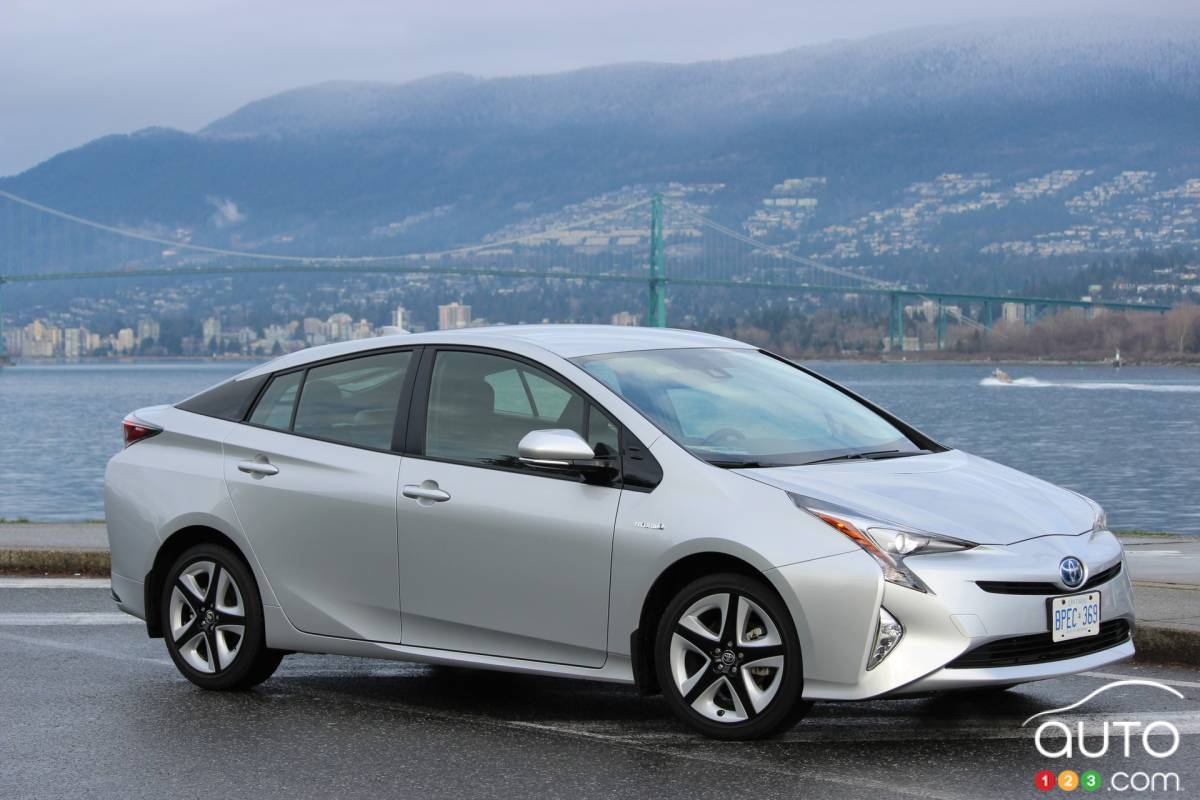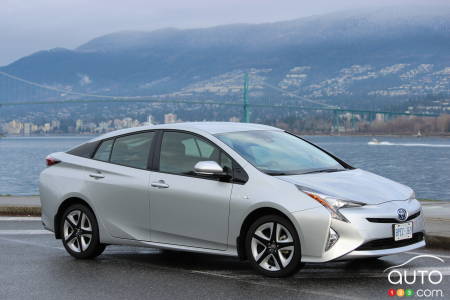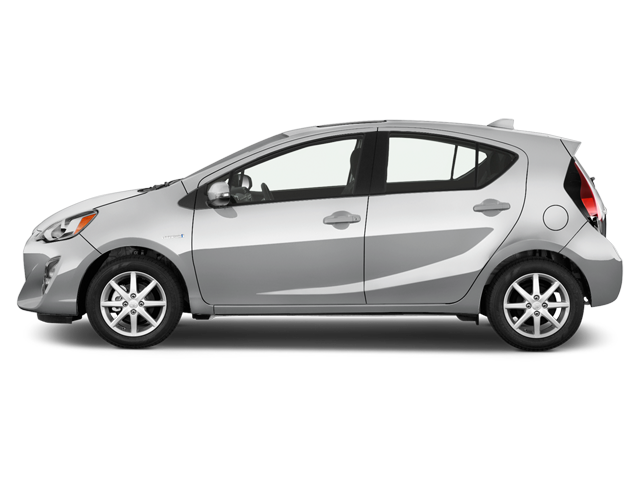Vancouver, BC -- The Toyota Prius is efficient, it’s trendy, and it’s even a favourite of cabbies everywhere thanks to its roominess and ease of maneuverability around town. No news there. This new Prius, though, is also stylish and handles well -- hey, wait a minute. Really? “Prius” and “handles well” in the same sentence? Come again?
Well, as I recently found out, there’s more to the all-new 2016 Prius than meets the eye. There’s more that meets the eye, too.
Attention paid
No matter how many Leo DiCaprios or Cameron Diazes were going to be paparazzied behind the wheel of one of these, no one was ever going to say they were buying a Prius for its style and panache.
Perhaps not until now, that is.
Starting at $25,995 (there are three trims: Prius, Prius Touring [$29,330], and Prius Technology [$28,730]), the ’16 Prius was given some of the styling chops that have permeated the rest of Toyota’s line-up. The front fascia actually has some attitude now, thanks to some pointy headlamp lenses, angular fog lights and a low-profile “grille” (which helps achieve a low 0.24 drag coefficient).
Around back and even in profile, meanwhile, the Prius bears a striking resemblance to its hydrogen-powered Mirai cousin, which has the dual effect of looking good, and giving us Canadians (and the rest of the world outside the US) the chance to at least sort of look like we’re driving something as futuristic as the US-only Mirai.
Regrettably, the view from the front 3/4 lets it down. The shape of the taillights plus the angle of the roof (it’s “peak” has been moved 140 mm forward for a more “cab forward” profile) just don’t come together cohesively.
Bottom line? The new Prius is better looking than the old one, but it doesn’t quite knock it out of the park.
New environs
At first, the interior seems familiar; the central-mounted dual-tier gauges, the tiny steering wheel, deep dash, and so forth. The smattering of white interior bits is new, although I’d probably avoid this colour combo. It looks a little cheap, a little too first-gen Volt-esque. I am, however, a fan of the SofTex leather seating, a first for the North American Prius.
However, as you spend more time inside, some pleasing details come to life. The gauge cluster, for instance, was remade to include dual 4.2” colour displays for your speedometre on one side and your trip computer/eco details on the other. It’s crisp, clear, and miles above the monochrome version of last year’s model.
It’s complemented by a 6.1” Display Audio screen on the centre stack, which grows to a full 7” when you either upgrade to the Technology Package or start with the top-flite Touring trim. The display looks similar to what’s on offer from other current Toyota products, but that’s not a bad thing as their system is an intuitive one. The switch to the 7” display also adds wireless charging; just place your device on a handy pad mounted right there on the centre console, and Bob’s your uncle. Unfortunately, there aren’t any plans to offer either Apple CarPlay or Android Auto, which is a shame.
Both the cargo and passenger volume grew thanks, in part, to the addition of an all-new rear suspension set-up that allows for a lower loading floor in the cargo bay. With the addition of all the infotainment features (as well as the electronic driving aids I’ll discuss in the next section) Toyota has had to find a way to save weight since hybrid systems are often still inherently heavy. So, if you spec one of the more tech-laden models, you get a lighter lithium-ion battery pack; while other models get the nickel-metal hydride battery we’ve seen for quite some time now. Toyota insists, however, that the only difference between the two is weight; performance is exactly the same.
Speaking of performance…
Power comes from a 1.8L gas engine and two electric motors. It makes a combined 121 horsepower, which is down (sort of) from the outgoing model. The Toyota folks on site assured us, though, that since Japan changed the way they rate combined power in hybrids, the new car is hardly slower than the outgoing model, even though it weighs pretty much the same.
The big changes, then, would have to be reserved for the chassis, right?
You got it.
Firstly, the ’16 car is 60% stiffer than the old car, insuring better left-right transitions and a smoother, quieter ride, too. Not only that, the steering was tuned differently too, for more directness and feel.
We were given the chance to drive last year’s car alongside the new one, and that steering description isn’t just PR-speak. There’s a genuinely noticeable difference between the two cars; the old one’s overly boosted set-up makes it feel like you’re merely turning the wheel, with the car answering your inputs seemingly by some fluke.
With the new car, there’s a real tactile sensation of a steering rack communicating with the front axle, for a nicely mechanical feel that is surprising for a grocery-getter like this.
If precise steering feel isn’t your focus, then the on-road attitude is sure to impress. We mentioned the low Cd, but that’s only part of the story.
Whether you’re in town on pockmarked roads or on the highway at speed, the Prius’ ride inspires confidence. It’s helped by an all-new double-wishbone rear suspension that, along with allowing more space in the cargo bay, makes for excellent ride and handling, punctuated by decreased body roll.
Its straight-line acceleration is not going to fool anyone into thinking that it’s a performance car, but the fuel economy we saw will surely satisfy the fuel miser in all of us. We saw just over 5L/100km after our day of driving both on city streets and the highway. We also saw full-EV cruising for bursts at speeds of up to 80km/h, and longer stints at the 30-50 km/h level.
For a less involving drive, the Prius can be spec’d with an array of active electronic driver aids. Indeed, now that Toyota is positioning the Prius as a mainstream car, additions had to be made in order to compete with the likes of the Honda Civic or Hyundai Elantra, both all-new and both of which feature driver aids like we’ve never seen before at the compact level.
In that light, the Toyota Safety Sense P package -- it can be spec’d on the base Prius for $590 -- adds radar cruise control, lane keep assist, pre-collision warning, and active high beams. The top Touring trim with the Advanced Package, meanwhile, adds a heads-up display, blind spot monitoring, and rear cross traffic alert.
Toyota is insisting that this fourth generation of the car marks its transition from the trendy green option, to the 1st choice among people looking at a compact hatchback. The styling may be off-putting to the conservative Prius buyer -- they exist, these people -- but with all the interior and tech additions made, I’ll take Toyota at its word. For now.
Road Tests and Reviews







